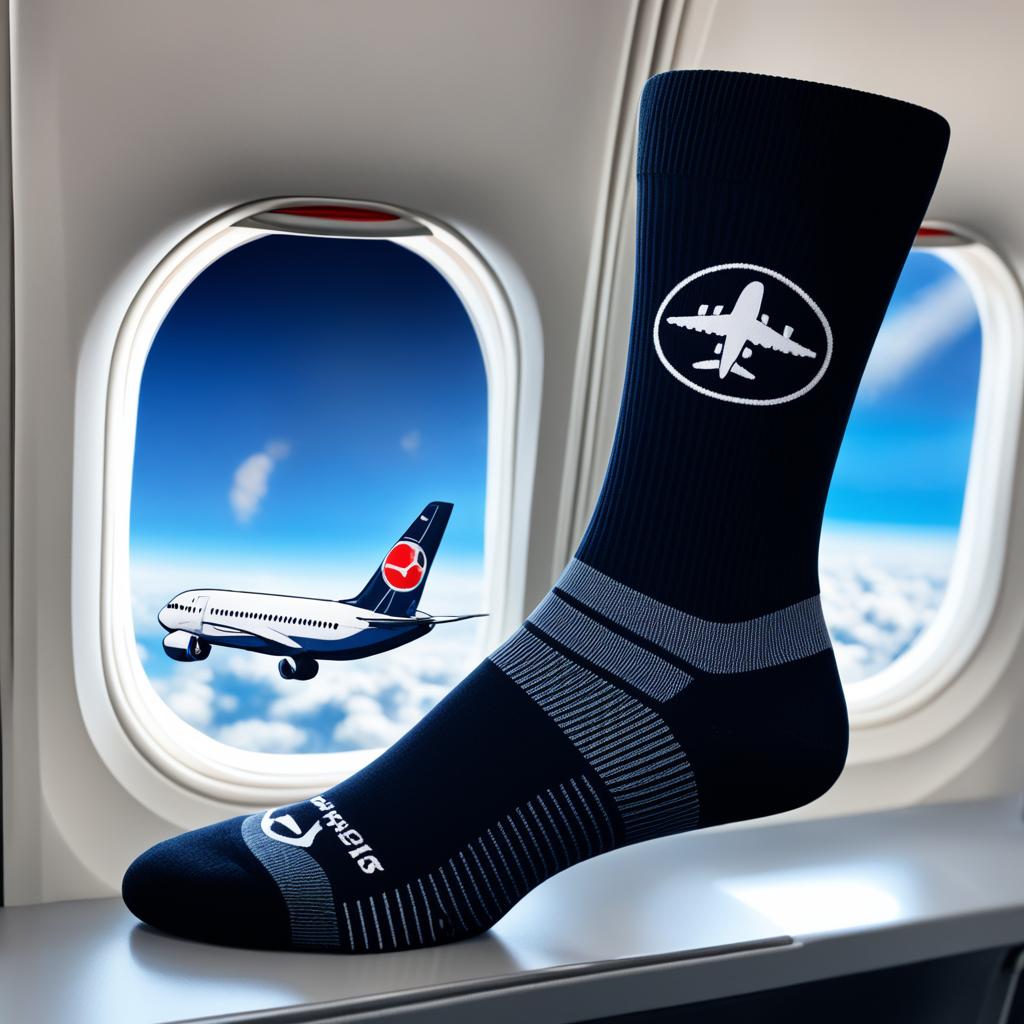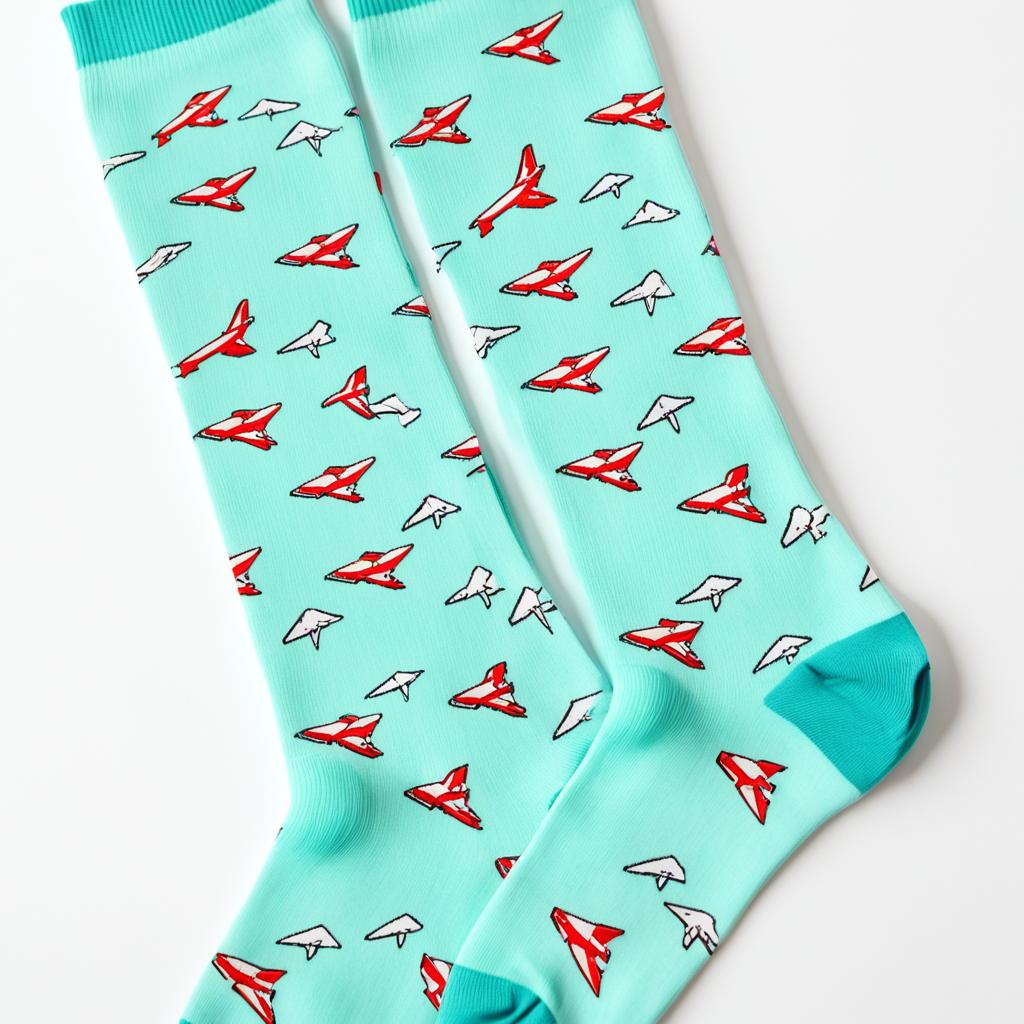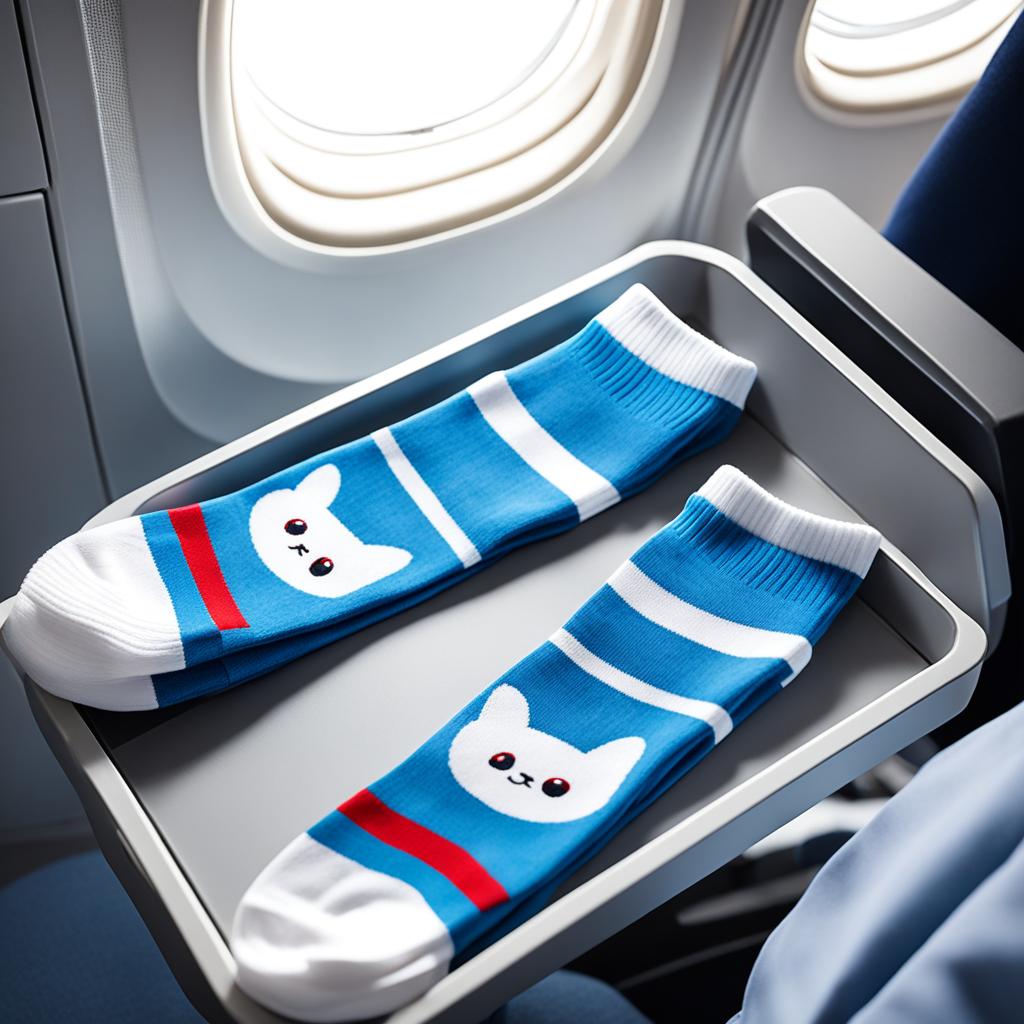Have you ever wondered why airplanes provide socks to passengers? It might seem like a small detail, but there’s actually a practical reason behind it. Airline policies and onboard attire play a crucial role in ensuring a comfortable and hygienic flight experience. So, why do airplanes give you socks?
Find out why wearing socks during a flight is more than just a fashion statement. Discover the benefits of flight socks and their role in preventing discomfort and health risks. Uncover the groups of people who should consider wearing flight socks, and explore the science behind how they work. Plus, learn valuable tips for preventing Deep Vein Thrombosis (DVT) during air travel.
Don’t let this intriguing question linger any longer. It’s time to unravel the mystery of why airplanes give you socks and gain valuable insights to enhance your next flight experience.
The Benefits of Flight Socks

Flight socks, also known as compression socks, offer several benefits for passengers on long flights. They provide graduated compression, which reduces swelling and discomfort in the feet and ankles. By applying pressure to the lower legs, flight socks help improve circulation and prevent the development of Deep Vein Thrombosis (DVT) – a condition in which blood clots form in the deep veins of the legs.
Flight socks are especially recommended for individuals at a higher risk of DVT, such as pregnant women, diabetics, people who have recently had surgery, and those with a family history of blood clotting disorders.
Deep Vein Thrombosis (DVT) is a serious medical condition that can occur during long flights due to prolonged sitting and limited leg movement. It can lead to pain, swelling, and even life-threatening complications if a blood clot travels to the lungs.
Flight socks help alleviate these risks by promoting better blood circulation. The compression provided by flight socks helps prevent blood from pooling in the legs and reduces the likelihood of blood clotting. This can significantly reduce the risk of developing DVT during a flight.
In addition to DVT prevention, flight socks also help to reduce swelling and discomfort that can occur during long flights. The compression provided by these socks helps to improve the flow of oxygen-rich blood to the muscles, reducing fatigue and swelling in the feet and ankles.
Whether you have a pre-existing medical condition, are pregnant, or simply want to ensure a more comfortable flight, wearing flight socks is a proactive measure to take. They are easily accessible and can be purchased online or at most pharmacies.
By prioritizing your leg health and wearing flight socks, you can enjoy a more comfortable and safer journey.
Who Should Wear Flight Socks?

Flight socks are beneficial for various groups of people who may be at a higher risk of developing Deep Vein Thrombosis (DVT) during air travel. It is important for individuals taking oestrogen supplements or undergoing hormone replacement therapy to wear flight socks as a precaution. This is because these medications can increase the risk of blood clotting, especially in the lower legs. Pregnant women, who already experience swollen feet and an increased risk of blood clotting, are always recommended to wear flight socks during air travel to mitigate DVT risks.
People with diabetes, particularly those with a history of leg ulcers, should also consider wearing flight socks. Diabetes can affect blood circulation and increase the likelihood of blood pooling in the lower extremities, making individuals more susceptible to DVT. Wearing flight socks can help improve blood flow and prevent blood clot formation.
Additionally, individuals with a family history of Type 1 diabetes or those who are regularly active and spend a lot of time on their feet can benefit from wearing flight socks. These individuals may have underlying circulatory issues, and flight socks can provide additional support by reducing the risk of blood pooling and enhancing blood circulation.
Wearing flight socks is a preventative measure that can significantly reduce the risk of DVT for these specific groups of people. By choosing to wear flight socks, individuals can ensure a safer and more comfortable travel experience.
The Science Behind Flight Socks

Flight socks, also known as compression socks, are designed to provide specific benefits for passengers during long flights. These socks work by applying graduated compression, exerting the highest pressure at the ankle and gradually decreasing towards the leg. This compression helps improve blood circulation, preventing swelling, fatigue, and discomfort associated with extended periods of sitting.
By applying pressure to the lower legs, flight socks encourage the flow of blood back up towards the heart, counteracting the effects of gravity. This increased circulation helps reduce the risk of blood pooling in the feet and ankles, which can lead to swelling and discomfort. The improved blood flow also aids in preventing the formation of blood clots, particularly Deep Vein Thrombosis (DVT).
Flight socks come in various styles, ranging from calf-length to just below the knee. They can be worn on one or both legs, depending on individual preference and needs. Some flight socks even feature special padding to alleviate muscle soreness during long journeys, providing additional comfort to passengers.
Wearing flight socks is a simple and effective way to promote circulation, reduce swelling, and combat fatigue while traveling. Whether you’re on a short domestic flight or a long-haul international journey, flight socks can help keep your legs feeling fresh and energized throughout the trip.
Key Benefits of Flight Socks:
- Improved circulation
- Reduced swelling
- Alleviated muscle soreness
- Prevention of fatigue and discomfort
- Reduced risk of blood clots, especially DVT
Tips for Preventing DVT During Air Travel
To reduce the risk of DVT during air travel, it is essential to take sensible precautions. Regular movement is crucial, especially exercises that involve calf muscles, as they help keep blood flowing through the veins. When seated, flexing and extending your ankles, as well as performing leg lifts, can promote blood circulation and prevent blood clots. Consider taking short walks down the aisle whenever possible to stretch your legs and improve circulation.
In addition to exercise, staying hydrated is important for DVT prevention. Drink plenty of water throughout the flight to keep your blood thin and reduce the chances of clotting. Avoid excessive alcohol and caffeine consumption, as they can contribute to dehydration. Opt for water or herbal teas instead to stay hydrated.
Choosing an aisle seat can greatly aid in preventing DVT. It allows for easy access to walk up and down the aisle regularly, reducing the time spent sitting in one position. If an aisle seat is not available, try to get up and move around whenever the seatbelt sign is off.
Avoiding sleeping tablets and alcohol is recommended during long flights. They can increase immobility and contribute to dehydration, increasing the risk of DVT. It is also advisable to use the overhead compartment for storing luggage, rather than placing it under the seat in front of you. This provides more legroom and allows for greater leg movement throughout the flight.
While DVT risk is relatively small for flights under 4 hours, individuals with specific risk factors such as a history of blood clotting disorders or recent surgery should consider wearing flight socks for added protection. Flight socks promote healthy blood circulation, reduce swelling, and help prevent DVT. For longer flights over 6 hours, wearing flight socks is highly recommended for all passengers to minimize the risk of DVT.
FAQ
Q: Why do airplanes provide socks to passengers?
A: Airplanes provide socks to passengers for various practical reasons. Most airlines have a dress code that mandates the presence of socks during the flight. The main reason is hygiene, as the aircraft cabins can be filled with filth and bacteria. Wearing socks prevents direct contact between passengers’ feet and the dirty floor. It also helps maintain personal space and avoid discomfort for fellow passengers. Additionally, socks can provide warmth and comfort during long flights.
Q: What are flight socks?
A: Flight socks, also known as compression socks, offer several benefits for passengers on long flights. They provide graduated compression, which reduces swelling and discomfort in the feet and ankles. By applying pressure to the lower legs, flight socks help improve circulation and prevent the development of Deep Vein Thrombosis (DVT) – a condition in which blood clots form in the deep veins of the legs. Flight socks are especially recommended for individuals at a higher risk of DVT, such as pregnant women, diabetics, people who have recently had surgery, and those with a family history of blood clotting disorders.
Q: Who should wear flight socks?
A: Flight socks are beneficial for various groups of people who may be at a higher risk of developing DVT during air travel. Individuals taking oestrogen supplements or undergoing hormone replacement therapy are more susceptible to blood clotting and should wear flight socks as a precaution. Pregnant women, who already experience swollen feet and an increased risk of blood clotting, are always recommended to wear flight socks. People with diabetes, especially those with a history of leg ulcers, should also consider wearing flight socks. Additionally, individuals with a family history of Type 1 diabetes or those who are regularly active and spend a lot of time on their feet can benefit from wearing flight socks to reduce the risk of blood pooling.
Q: How do flight socks work?
A: Flight socks work by applying graduated compression, exerting the highest pressure at the ankle and gradually decreasing towards the leg. This compression helps improve blood circulation by pushing fluids back up towards the heart, preventing swelling, fatigue, and discomfort associated with long flights. Some flight socks also feature special padding to alleviate muscle soreness, providing additional comfort to passengers during their journey. They come in different styles, from calf-length to just below the knee, and can be worn on one or both legs, depending on individual needs.
Q: What are some tips for preventing DVT during air travel?
A: To reduce the risk of DVT during air travel, it is essential to take sensible precautions. Regular movement is crucial, especially exercises that involve calf muscles, as they help keep blood flowing through the veins. Staying hydrated is also important, as dehydration can make blood thicker and more prone to clotting. Choosing an aisle seat allows for easy access to walk up and down the aisle regularly. Avoiding sleeping tablets and alcohol is recommended, as they can increase immobility and contribute to dehydration. Overhead compartment usage instead of storing luggage under the seat can provide more space for leg movement. It’s important to note that the risk of DVT is relatively small for flights under 4 hours, but for individuals with specific risk factors, wearing flight socks is beneficial, especially on flights over 6 hours.
